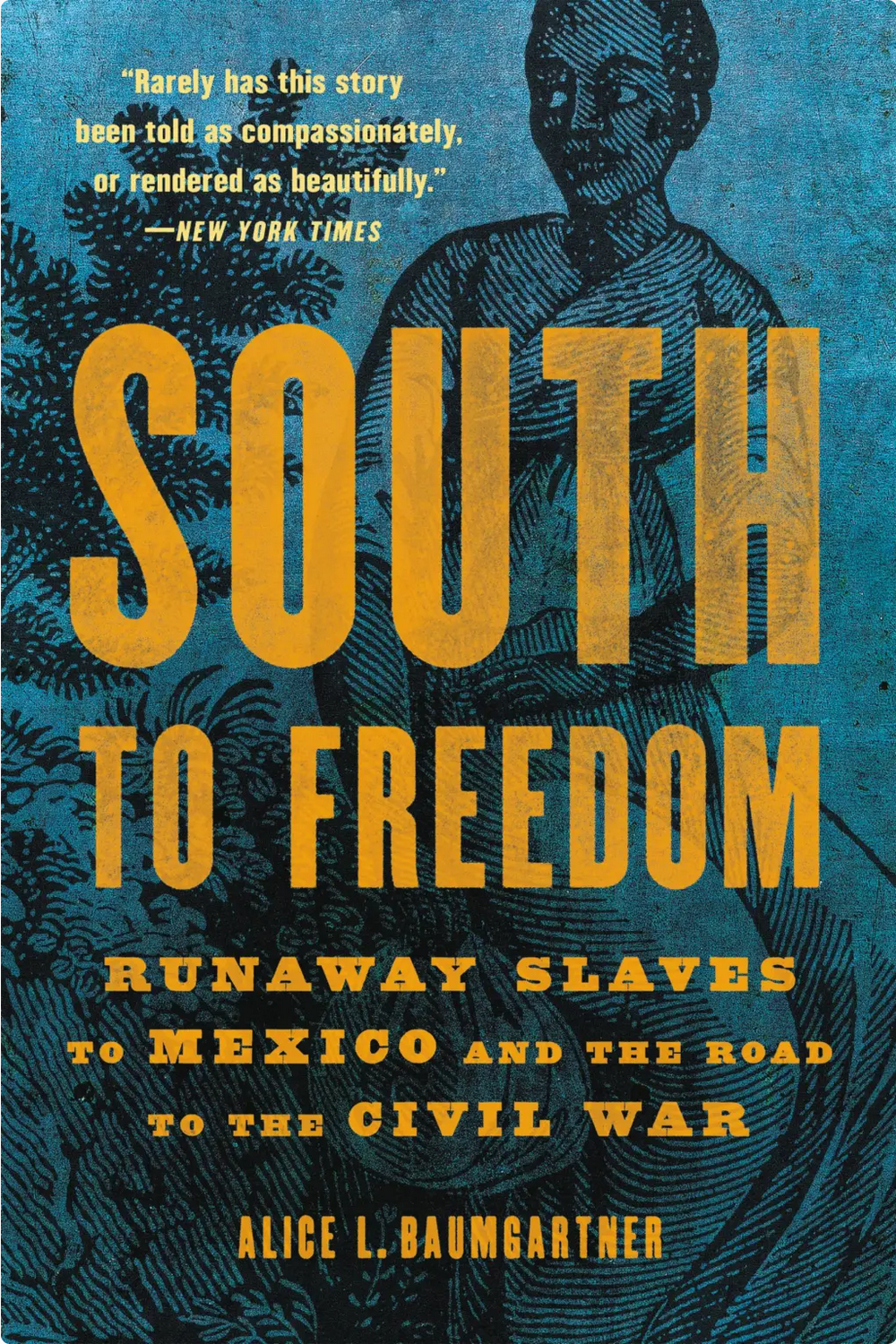In the four decades before the Civil War, an estimated several thousand enslaved people escaped from the south-central United States to Mexico. Some received help—from free Black people, ship captains, Mexicans, Germans, preachers, mail riders, and, according to one Texan paper, other “lurking scoundrels.” Most, though, escaped to Mexico by their own ingenuity. They acquired forged travel passes. They disguised themselves as white men, fashioning wigs from horsehair and pitch. They stole horses, firearms, skiffs, dirk knives, fur hats, and, in one instance, twelve gold watches and a diamond breast pin. And then they disappeared.
Why did runaways head toward Mexico? For enslaved people in Texas or Louisiana, the northern states were hundreds of miles away. Even if they did manage to cross the Mason-Dixon line, they were not legally free. In fact, the fugitive-slave clause of the U.S. Constitution and the laws meant to enforce it sought to return runaways to their owners. Mexico, by contrast, granted enslaved people legal protections that they did not enjoy in the northern United States. Mexico’s Congress abolished slavery in 1837. Twenty years later, the country adopted a constitution that granted freedom to all enslaved people who set foot on Mexican soil, signalling that freedom was not some abstract ideal but a general and inviolable principle, the law of the land.
Two options awaited most runaways in Mexico. The first was to join Mexico’s military colonies, a series of outposts along the northern frontier, which defended against Native peoples and foreign invaders. The second was to seek employment as servants, tailors, cooks, carpenters, bricklayers, or day laborers, among other occupations. Their lives were by no means easy, and slaveholders pointed to these difficulties to suggest that bondage in the United States was preferable to “freedom” in Mexico. Noah Smithwick, a gunsmith in Texas, recalled that a slave named Moses had grown tired of living off “husks” in Mexico and returned to his owner’s “lenient rule” near Houston. Another came back from his “Mexican tour” in 1852, according to the Clarksville, Texas, Northern Standard, with a “supreme disgust” for Mexicans. The conditions in Mexico were so bad, according to newspapers in the United States, that runaways returned to their homes of their own accord.
Some enslaved people did return to the United States, but typically not for the reasons that slaveholders claimed. In 1858, a slave named Albert, who had escaped to Mexico nearly two years earlier, returned to the cotton plantation of his owner, “a Mr. Gordon of Texas.” The Independent Press in Abbeville, South Carolina, reported that, “like all others” who escaped to Mexico, “he has a poor opinion of the country and laws.” Albert did not give Mr. Gordon any reason to doubt this conclusion. He remained at his owner’s plantation, near Matagorda, Texas, where the Brazos River emptied into the Gulf. But Albert did not come back to stay. Five or six months after his return, he was gone—this time with his brothers, Henry and Isaac. What drew them across the Rio Grande gives us a crucial view of how Mexico, a country suffering from poverty, corruption, and political upheaval, deepened the debate about slavery in the decades before the Civil War.
